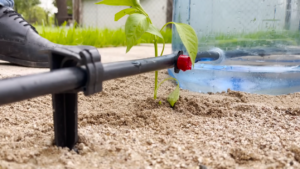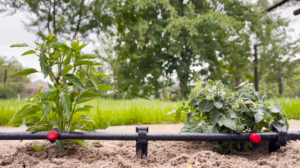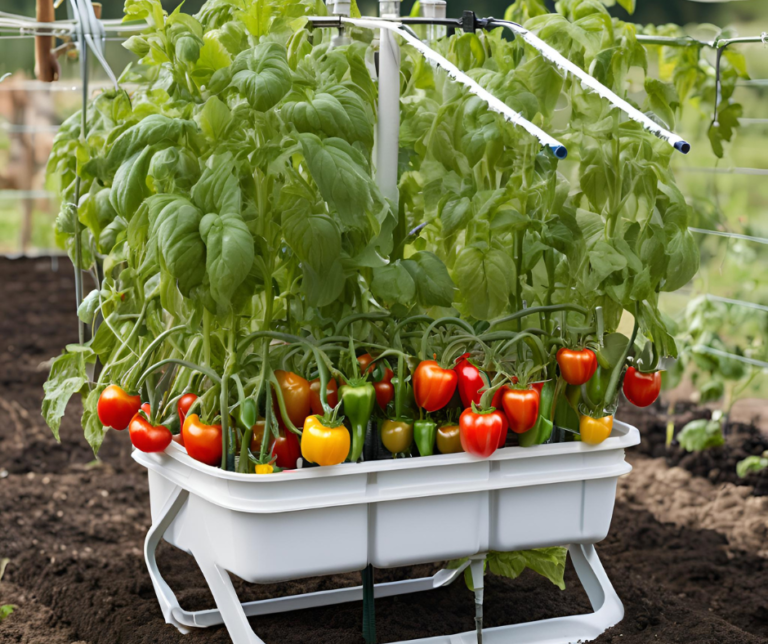Water management is critical in small-scale agriculture, especially in regions facing water scarcity. The Chapin Bucket irrigation system offers a cost-effective and sustainable solution, allowing farmers to conserve water and improve crop yields. This simple yet revolutionary method involves drip irrigation that minimizes waste by delivering water directly to plant roots.
For other innovative gardening solutions, explore using fish scraps as natural fertilizer to enhance soil health. Additionally, DIY irrigation systems like the Chapin Bucket complement sustainable practices, such as growing your own produce, as explained in how to grow tomatoes at home.
What Is the Chapin Bucket System?
The Chapin Bucket system is a gravity-fed drip irrigation system designed to supply water efficiently to small-scale farms and home gardens. It consists of a 20-gallon bucket, drip lines, and emitters that deliver water directly to plant roots. This minimizes evaporation and runoff, making it ideal for water-scarce environments.
Such methods are crucial for maximizing productivity in urban agriculture and homesteads, where resources may be limited. To explore companion planting ideas that work well with irrigation systems, read about what herbs to plant together.
How the Chapin Bucket System Works

1. Components of the Chapin Bucket System
- 20-gallon bucket: Serves as the water reservoir.
- Drip lines and emitters: Deliver water efficiently to plant roots.
- Stakes: Keep the drip lines in place to ensure even water distribution.
2. Setting Up the System
- Place the bucket slightly above the crop rows to create a gravity-fed flow.
- Connect the drip lines to the bucket and arrange them along the plants.
- Use stakes to secure the lines and prevent movement.
3. Adjusting the System for Different Crops
- Modify the flow from emitters depending on plant needs.
- Use soil moisture sensors to monitor and adjust water delivery effectively.
Benefits of the Chapin Bucket System
1. Water Conservation

- This drip irrigation system prevents evaporation and reduces water waste by supplying moisture directly to the roots.
- It’s a sustainable method, especially for regions prone to drought.
2. Cost-Effective Solution
- The Chapin Bucket requires minimal investment, making it affordable for small farmers.
- It helps reduce water bills and can be assembled using easily accessible materials.
3. Ease of Use
- The system requires little maintenance beyond occasional cleaning to prevent clogging.
- Even those with limited agricultural experience can use it effectively.
Optimizing Water Usage with Best Practices
1. Choose the Right Crops
- Vegetables like tomatoes, peppers, and herbs thrive with drip irrigation.
- Seasonal crops can benefit from water-efficient practices to optimize growth.
2. Maintain the System Regularly
- Check the bucket and lines for leaks and blockages.
- Clean the emitters to prevent algae buildup.
3. Monitor Moisture Levels
- Use soil sensors to track moisture and adjust watering schedules.
- This helps avoid overwatering, ensuring plants receive the right amount of water.
For more insight into managing plant care efficiently, explore how manure tea can boost plant health.
Case Studies: Real-Life Success with the Chapin Bucket System
Many farmers have reported improved crop yields and reduced water consumption by adopting the Chapin Bucket irrigation system. Urban gardens have also benefited, as the system is simple to install and maintain. In water-scarce regions, this system has proven to be a game-changer, allowing farmers to grow crops sustainably despite limited resources.
Environmental Impact of the Chapin Bucket System
1. Reducing Water Waste
- Direct root watering prevents surface runoff, ensuring that each drop is used effectively.
- This system aligns with sustainable agricultural practices by minimizing water use.
2. Supporting Sustainable Agriculture
- Promoting efficient irrigation practices contributes to climate-resilient farming.
- It encourages farmers to adopt methods that reduce their environmental footprint.
3. Overcoming Challenges
- Clogging can be a concern, but regular maintenance solves this issue.
- Scaling the system to larger farms may require additional customization.
FAQs About the Chapin Bucket System
How much water does the Chapin Bucket System save?
It can reduce water usage by up to 50% compared to traditional watering methods.
Can the system be used for all crops?
While it works best for vegetables, herbs, and small fruits, it may not be suitable for large crops requiring higher water volumes.
What maintenance does the system require?
Regular cleaning of the drip lines and bucket is necessary to prevent clogs and ensure smooth operation.
How long does it take to set up the system?
Setting up the Chapin Bucket system can take less than an hour, depending on the area being irrigated.
Is the system suitable for drought-prone areas?
Yes, its water efficiency makes it ideal for areas with limited water resources.
Conclusion
The Chapin Bucket System is revolutionizing small-scale agriculture by providing an efficient, affordable, and easy-to-use watering solution. Its ability to minimize water waste while enhancing crop health makes it a vital tool for farmers, gardeners, and homesteaders alike. Adopting such sustainable systems ensures that agriculture can thrive, even in the face of water scarcity.
By integrating tools like the Chapin Bucket, farmers can embrace more sustainable agricultural practices that benefit both their crops and the environment. For further inspiration, explore innovative drip irrigation systems to enhance your farm or garden’s efficiency.
